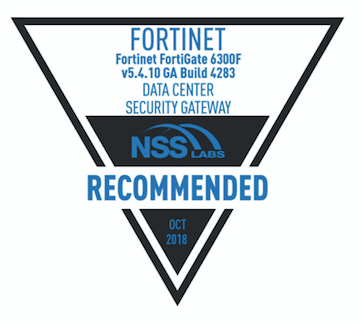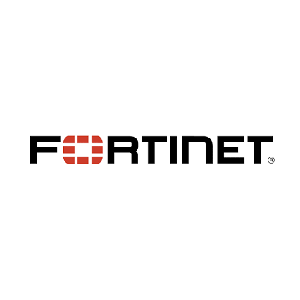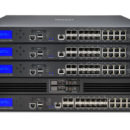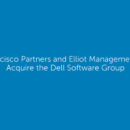New Research: Equifax Breach Vulnerability Surfaces as Top Network Attack in Q3 2019

WatchGuard’s latest Internet Security Report also reveals significant increases in malware and network attacks, as zero day malware accounts for 50% of all detections
SEATTLE – December 11, 2019 – WatchGuard® Technologies, a global leader in network security and intelligence, secure Wi-Fi and multi-factor authentication, today announced the release of its Internet Security Report for Q3 2019. Amid significant increases in both malware and network attacks, multiple Apache Struts vulnerabilities – including one used in the devastating Equifax data breach – appeared for the first time on WatchGuard’s list of the most popular network attacks in Q3 2019. The report also highlights a major rise in zero day malware detections, increasing use of Microsoft Office exploits and legitimate penetration testing tools, and more.
“Our latest threat intelligence showcases the variability and sophistication of cyber criminals’ growing playbook. Not only are they leveraging notorious attacks, but they’re launching evasive malware campaigns and hijacking products, tools and domains we use every day,” said Corey Nachreiner, chief technology officer at WatchGuard Technologies. “As threat actors continue to modify their tactics, organizations of every size must protect themselves, their customers and their partners with a set of layered security services that cover everything from the core network to endpoints to the users themselves.”
WatchGuard’s Internet Security Report arms businesses with the data, trends, research and defensive advice they need to better understand today’s security landscape and remain vigilant and protected against emerging threats. Here are several key findings from the Q3 2019 report:
- New network attack targets major vulnerability used in Equifax data breach – Debuting on WatchGuard’s list of top ten most popular network attacks, Apache Struts 2 Remote Code Execution enables attackers to install Python or make a custom HTTP request to exploit the vulnerability with just a few lines of code and obtain shell access to an exposed system. This threat was accompanied by two additional Apache Struts vulnerabilities on the top ten network attacks list in Q3, as overall network attacks increased in volume by 8%. The massive fallout from the Equifax breach put the severity of this vulnerability on full display and should serve as a reminder of how important it is for web admins to patch known flaws as soon as possible.
- Attackers continue to favor Microsoft Office exploits – Two malware variants affecting Microsoft Office products made WatchGuard’s top ten list of malware by volume, as well as the top ten most-widespread malware list last quarter. This indicates that threat actors are doubling down on both the frequency with which they leverage Office-based attacks, as well as the number of victims they’re targeting. Both attacks were primarily delivered via email, which highlights why organizations should increasingly focus on user training and education to help them identify phishing attempts and other attacks leveraging malicious attachments.
- Zero day malware instances spike to 50%, as overall malware detections rise – After stabilizing at around 38% of all malware detections over the past several quarters, zero day malware accounted for half of all detections in Q3. The overall volume of malware detected increased by 4% compared to Q2 2019, with a massive 60% increase over Q3 2018. The fact that half of malware attacks in Q3 were capable of bypassing traditional signature-based solutions illustrates the need for layered security services that can protect against advanced, ever-evolving threats.
- Cyber criminals may be leveraging legitimate pentesting tools for attacks – Two new malware variants involving Kali Linux penetration testing tools debuted on WatchGuard’s top ten list of malware by volume in Q3. The first was Boxter, a PowerShell trojan used to download and install potentially unwanted programs onto a victim’s device without consent. The second was Hacktool.JQ, which represents the only other authentication attack tool besides Mimikatz (which dropped in prevalence by 48% compared to Q2, and 16% compared to Q3 2018) to make the list. It’s unclear whether the rise in these detections comes from legitimate pentesting activities or malicious attackers leveraging readily available open source tools. Organizations must continue to leverage anti-malware services to prevent data theft.
- Malware attacks targeting the Americas increase drastically – More than 42% of all malware attacks in Q3 2019 were aimed at North, Central and South America; up from just 27% in Q2. This represents a significant geographic shift in focus for attackers compared to last quarter, as EMEA and APAC (which were tied for the top regional malware target in Q2) accounted for 30% and 28% of all malware attacks in Q3, respectively. Although the specific motivations are unclear, this trend indicates attackers are bringing new malware campaigns online that specifically target users in the Americas region.
The findings included in WatchGuard’s Internet Security Report are drawn from anonymized Firebox Feed data from active WatchGuard UTM appliances whose owners have opted in to share data to support the Threat Lab’s research efforts. Today, nearly 37,000 appliances worldwide contribute threat intelligence data to the report. In Q3 2019, they blocked over 23,000,000 malware variants in total (623 samples each) and nearly 2,400,000 network attacks (65 per device).
The complete report lays out the industry’s most impactful malware and network attack trends, DNSWatch data on the quarter’s top malicious domains associated with malware, compromised websites and phishing links, an analysis of Kazakhstan’s HTTPS decryption campaign, and key defensive best practices that organizations of all sizes can use to protect themselves in today’s threat landscape.
Analysis of Kazakhstan’s Nation-wide HTTPS Decryption Campaign
The report includes an in-depth breakdown of Kazakhstan’s decision to begin intercepting and decrypting all HTTPS traffic inside its borders in Q3. WatchGuard’s Threat Lab details the ins and outs of HTTPS encryption and decryption, similar programs launched by other countries, the role of HTTPS encryption in enterprise network security, and best practices every organization should take away from this example.
For more information, download the full report here.














Dell Software Group sold to help fund looming EMC deal
Ingram Micro gets distribution access to Dell’s security range in Australia